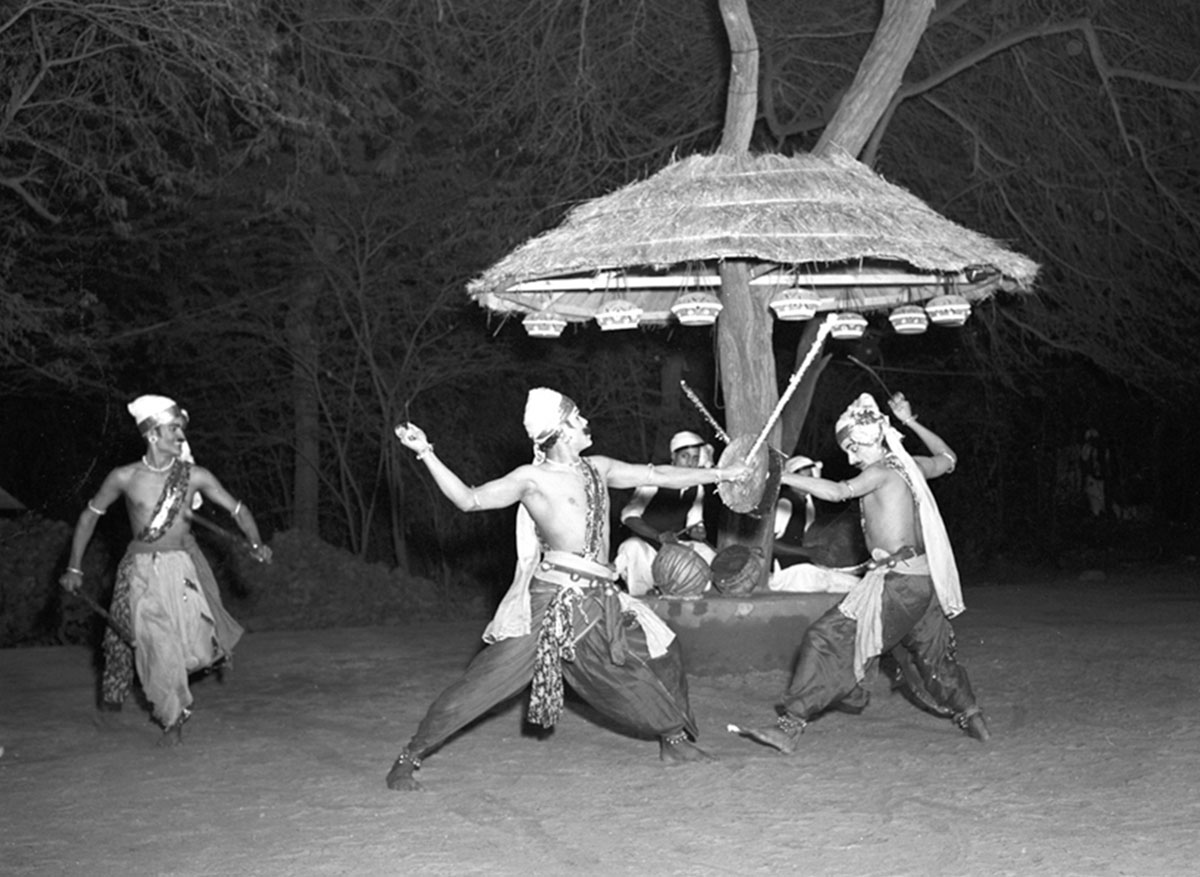ARTICLE
Pari-Khanda
Originating from the regions of Saraikela and Singhbhum in Jharkhand, pari-khanda is a martial art whose name comes from the weapons — pari (sword) and khanda (shield). It was established as a form of physical training for the soldiers.
Pari-khanda training begins with the practice of chaalis, or steps, which involve the movements of birds and animals such as the haathi chaali (the elephant movement) and baagh chaali (tiger movement). These are followed by upalayas or combined movements inspired by movements occurring in daily life, such as gutti-koora, lifting a pebble with one’s toes; gobar-goola, mixing cow-dung with water; kula-pachra, husking paddy; bota-cheera, splitting a bamboo; and finally the khel, consisting of ten movements. Pari-khanda is generally performed early in the morning and on the banks of the Kharkai river, on a stretch of raised land, known as Bhairavsal, consisting of seven stone lingams (phallic-shaped stones symbolising the deity Shiva) before each of which the pari-khanda performers prostrate themselves. Performers normally perform in a dhoti and a bare torso.
Today, the martial art form survives in the form of chhau dance which utilises the movements of pari-khanda. Another variation of the pari-khanda is known as the paika, a martial art form popular in Odisha.
Bibliography
Our website is currently undergoing maintenance and re-design, due to which we have had to take down some of our bibliographies. While these will be re-published shortly, you can request references for specific articles by writing to hellomapacademy@map-india.org.







